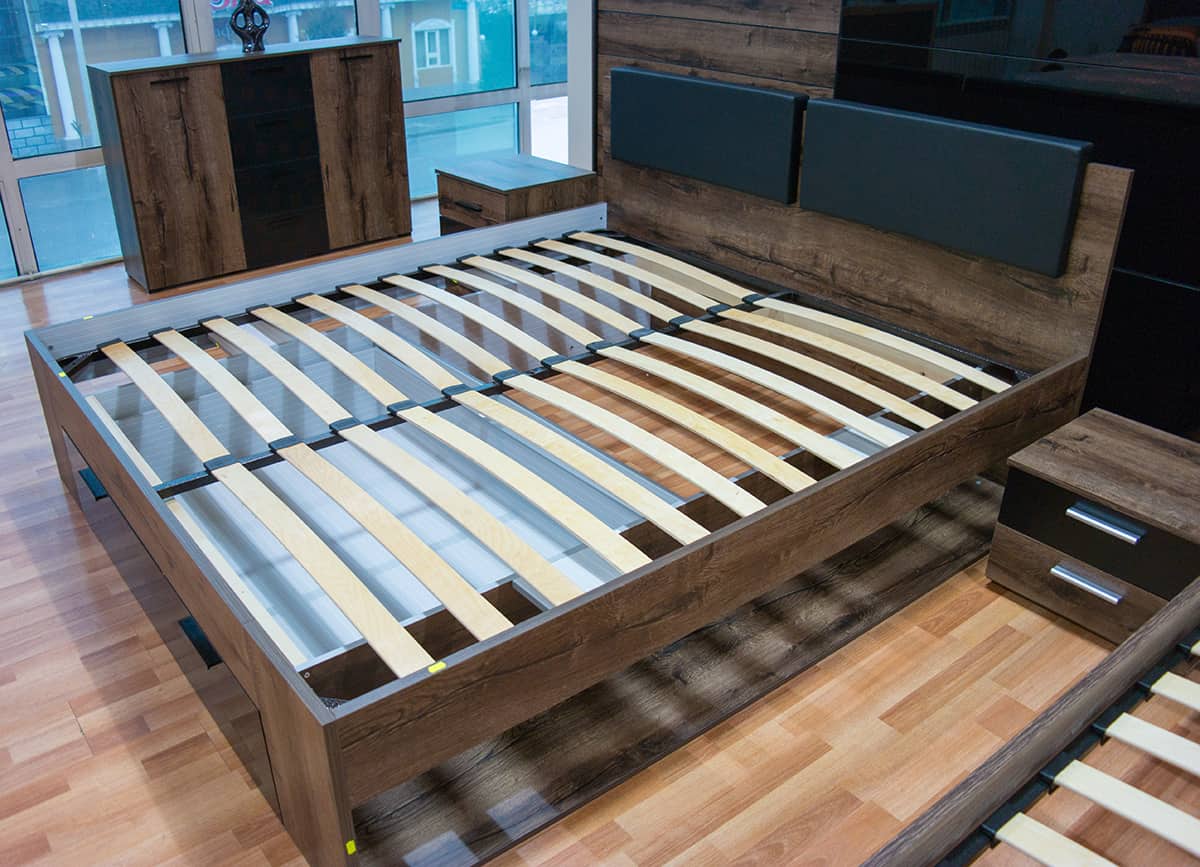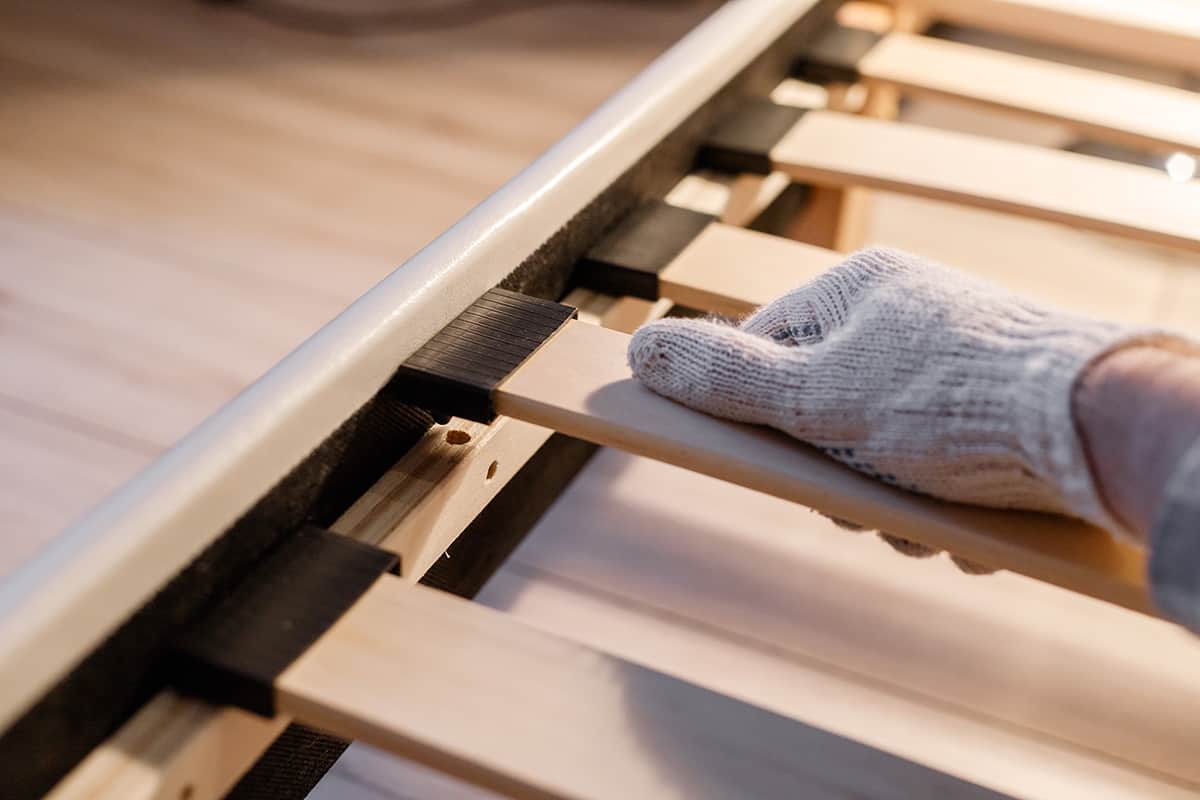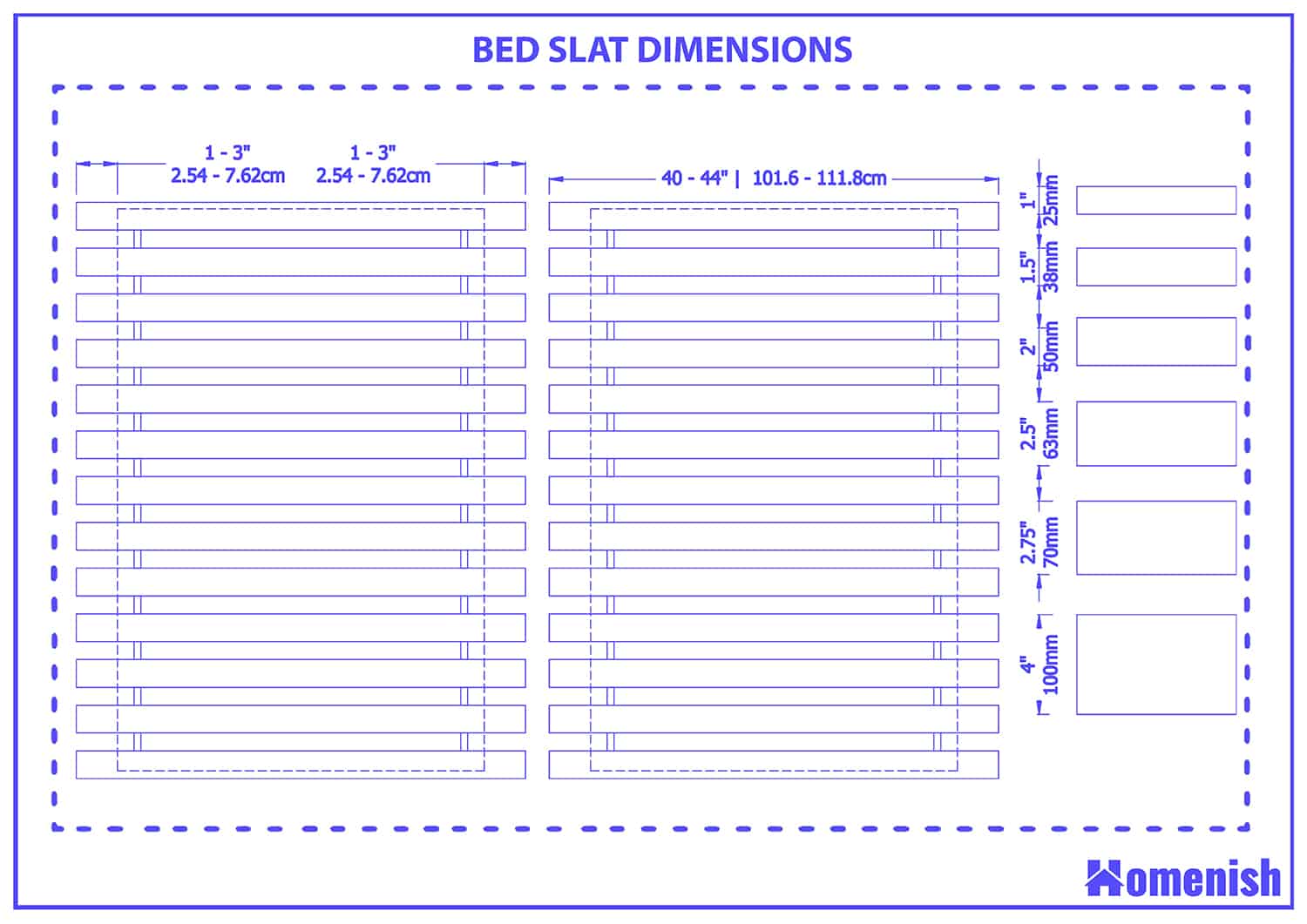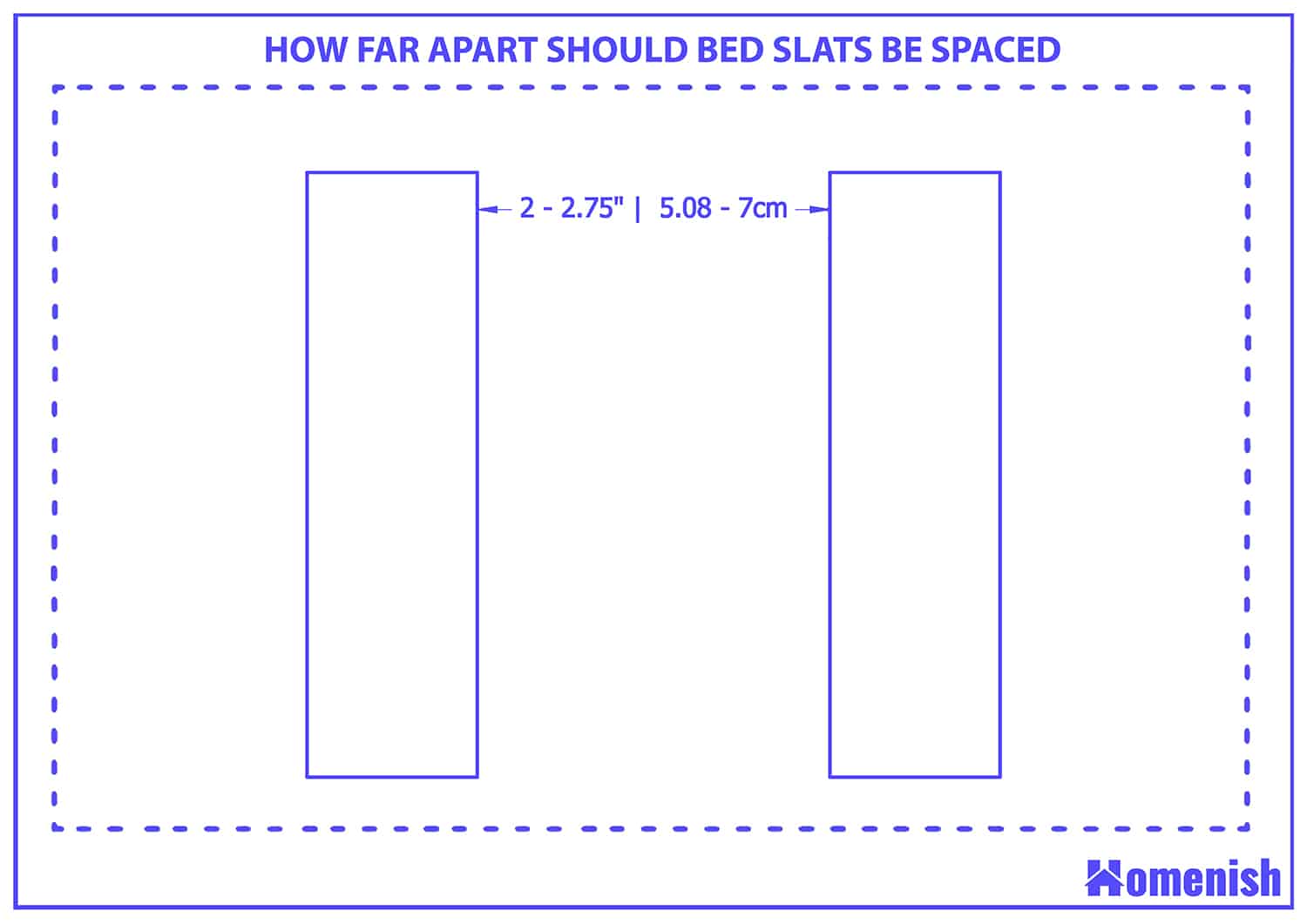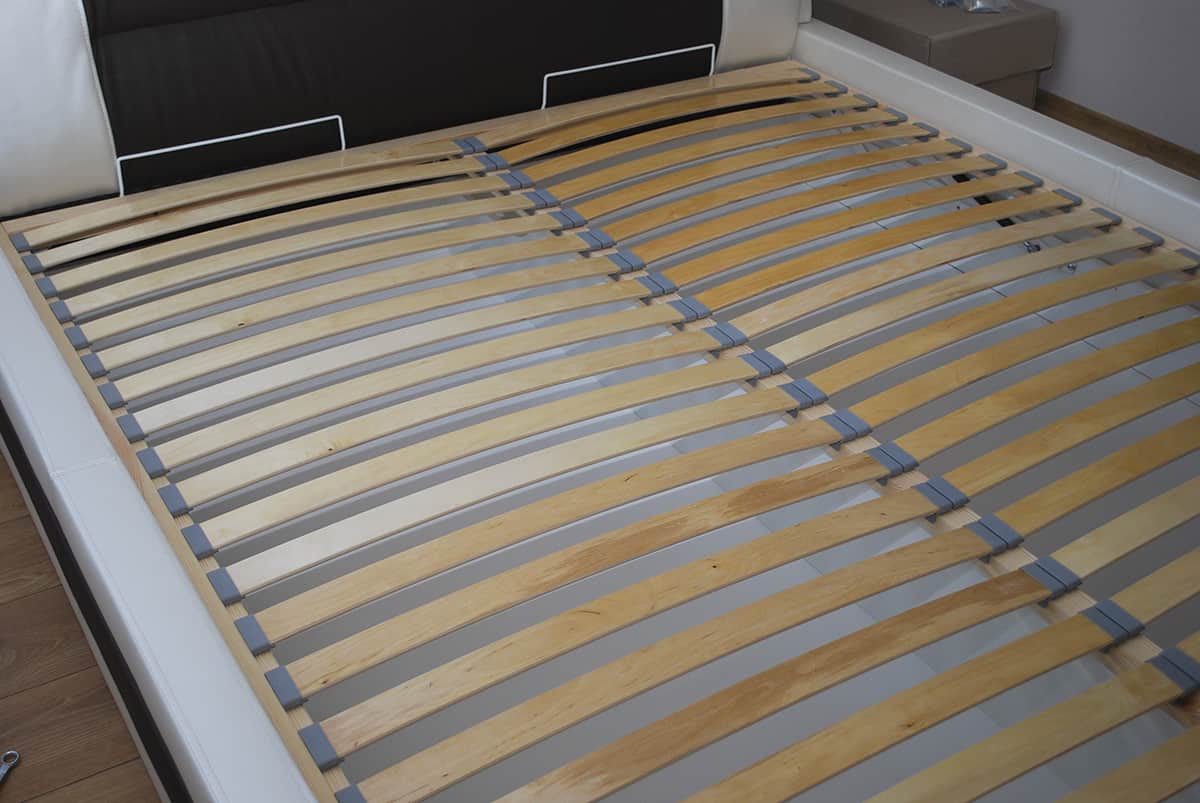Bed slats are an essential part of many bed frames, providing support to the mattress and helping to keep it in place.
Bed slats come in a range of width sizes from 1 inch to 4 inches, while the length measurements need to correspond to the size of the mattress. Here we explore the benefits of bed slats and the variety of sizes they come in.
What are Bed Slats?
Bed slats form part of the structure of a bedframe for beds that do not use a box spring base. Bed slats will be made from metal or wood, and they take the shape of long rectangular pieces which are installed width-ways across a bed frame as a support underneath a mattress.
Some bed slats will be joined together by long pieces of fabric, which help to hold them in place and create consistent spacing between each slat, while others remain individual.
Bed slats have been around for a long time, but they are growing in popularity as an alternative to box springs because they typically offer better support and are also more cost-effective.
Bed Slat Dimensions
Bed slats come in a variety of different dimensions. If you want a more supportive system underneath your mattress, then thicker slats will provide this.
Thinner slats will be more prone to breakage, especially as a result of children jumping on the bed. The main advantage of thinner bed slats is that they are considerably less expensive to buy than thick bed slats, so you could replace an individual slat for a very low cost if one were to break.
Bed Slat Length
The length of a bed slat is measured by taking the longest measurement of an individual slat. The slats will be placed across the width of the bed, which will be from one side of the bed to the other side rather than from the head to the foot. This means that the length of the slats will need to correlate exactly with the size of the bed frame and the size of the mattress.
The length of a bed slat should be between 1 and 3 inches longer at each end than the width of the mattress. This ensures that the mattress doesn’t fit too snuggly, and there is little wiggle room for putting fitted sheets into place.
For example, a standard twin-sized mattress measures 38 inches in width. The bed slats should provide an extra 1 to 3 inches of space on each side. Therefore, the length of the bed slats will need to be between 40 and 44 inches. For a full-sized mattress which has a standard measurement of 54 inches, the bed slats will need to have a length measurement of between 56 and 60 inches.
Bed Slat Width
Bed slats come in a range of widths, and you can choose any width regardless of the size of the bed or mattress. When discussing width, we are referring to the width measurement of each single slat rather than the width of space the set of slats takes up.
Bed slats typically come in width options of 1 inch (25mm), 1.5 inches (38mm), 2 inches (50mm), 2.5 inches (63mm), 2.75 inches (70mm), and 4 inches (100mm).
The most common width size for a bed slat is 2.5 inches, which gives a good level of support while remaining at a reasonable cost. Bed slats with smaller width measurements will be more inexpensive to buy, though they may cost more in the long run when you account for having to replace broken slats over time.
How Far Apart Should Bed Slats Be Spaced
The distance between each bed slat is called the spacing measurement. A distance of 2 inches to 2.75 inches between each bed slat is recommended for optimum support and flexibility.
The less distance between each slat, the more firm the support will be. Bear in mind that if you want a smaller spacing, then you will need more bed slats, while a larger distance in spacing will require fewer bed slats.
Benefits of Bed Slats
Bed slats offer a number of benefits, especially when compared with box spring bed bases.
Supportive
Bed slats, when installed correctly, will evenly distribute the weight of the user across the mattress. They will hold the mattress in place better than a box spring, preventing slipping and sliding. Traditional box spring bases use springs to provide support, but most modern varieties are made up of a wooden frame covered in fabric, without any springs.
These types of box springs provide height, but do not offer much support for the mattress. Even the most luxurious mattress will start to sag on a box spring without springs, so bed slats are a better option for supportive rest.
Cost Effective
Bed slats are inexpensive to buy, so the overall cost of purchasing a bed with slats will depend on the type of frame you choose. If you are looking for a budget-priced bed, options of frames with slats tend to be much more affordable compared with box spring beds.
Simple Assembly
Bed slats are very easy to assemble, making them a great option for anyone who can complete some basic DIY. Wooden bed slats need to be spread out evenly across the bed frame, and these can then be screwed or nailed into place, though some bed slats simply fit onto the bed frame and don’t need to be secured.
Metal bed slats may require more assembly, typically with screws being fixed into corresponding holes, though even these will be fairly quick and simple to put together.
Easily Portable
If you live in an apartment at the top of a staircase or an elevator, then a bed frame that uses bed slats will be much easier to maneuver to the bedroom compared with a box spring. This is because they can be broken down into fewer, lightweight, smaller pieces, which are easy to transport.
Airflow
Bed slats allow for much better airflow to the underside of the mattress compared with box spring bed bases. This helps to keep the user cooler during warm times of the year and allows the mattress to breathe.
